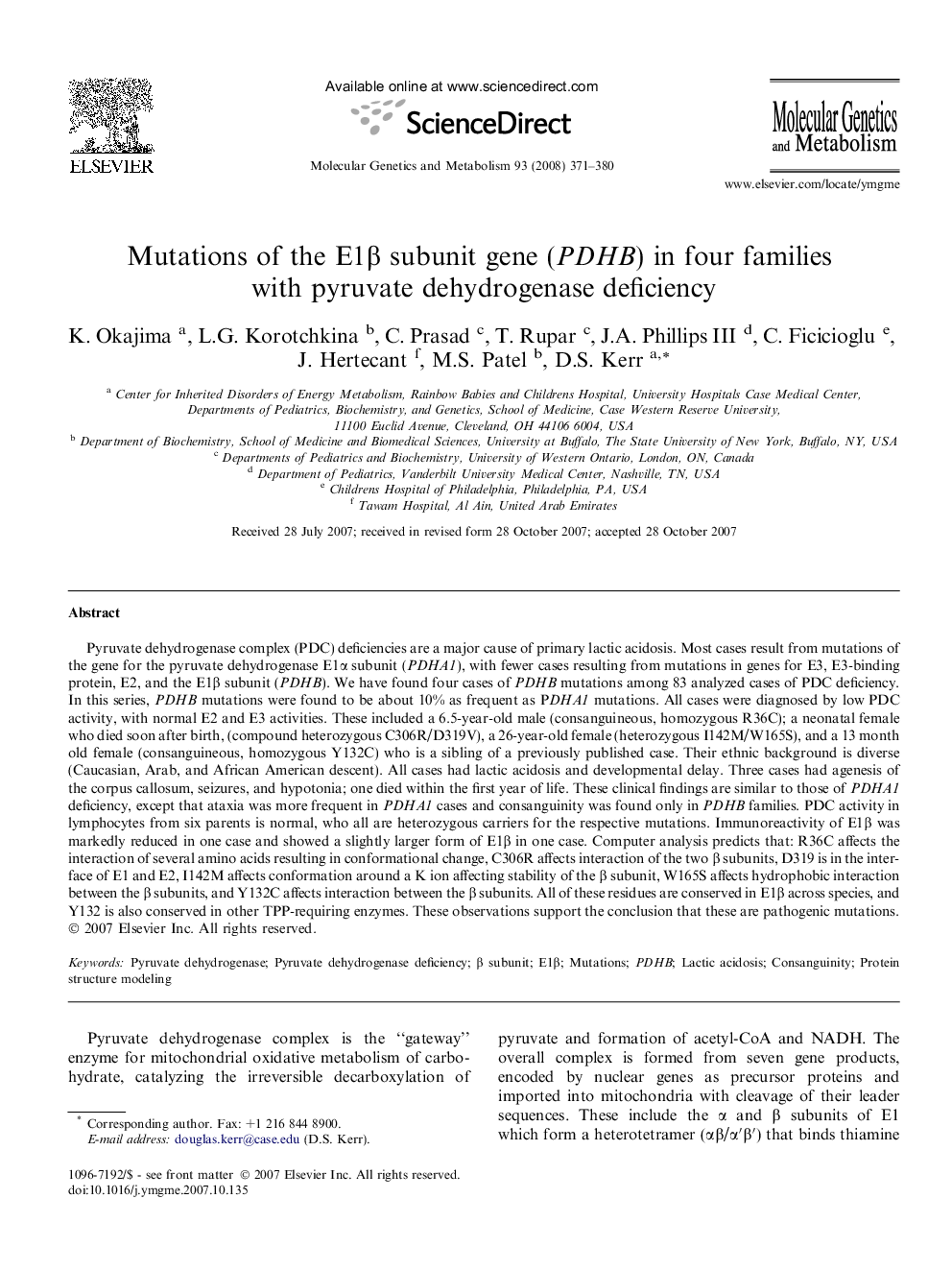| Article ID | Journal | Published Year | Pages | File Type |
|---|---|---|---|---|
| 1999443 | Molecular Genetics and Metabolism | 2008 | 10 Pages |
Pyruvate dehydrogenase complex (PDC) deficiencies are a major cause of primary lactic acidosis. Most cases result from mutations of the gene for the pyruvate dehydrogenase E1α subunit (PDHA1), with fewer cases resulting from mutations in genes for E3, E3-binding protein, E2, and the E1β subunit (PDHB). We have found four cases of PDHB mutations among 83 analyzed cases of PDC deficiency. In this series, PDHB mutations were found to be about 10% as frequent as PDHA1 mutations. All cases were diagnosed by low PDC activity, with normal E2 and E3 activities. These included a 6.5-year-old male (consanguineous, homozygous R36C); a neonatal female who died soon after birth, (compound heterozygous C306R/D319V), a 26-year-old female (heterozygous I142M/W165S), and a 13 month old female (consanguineous, homozygous Y132C) who is a sibling of a previously published case. Their ethnic background is diverse (Caucasian, Arab, and African American descent). All cases had lactic acidosis and developmental delay. Three cases had agenesis of the corpus callosum, seizures, and hypotonia; one died within the first year of life. These clinical findings are similar to those of PDHA1 deficiency, except that ataxia was more frequent in PDHA1 cases and consanguinity was found only in PDHB families. PDC activity in lymphocytes from six parents is normal, who all are heterozygous carriers for the respective mutations. Immunoreactivity of E1β was markedly reduced in one case and showed a slightly larger form of E1β in one case. Computer analysis predicts that: R36C affects the interaction of several amino acids resulting in conformational change, C306R affects interaction of the two β subunits, D319 is in the interface of E1 and E2, I142M affects conformation around a K ion affecting stability of the β subunit, W165S affects hydrophobic interaction between the β subunits, and Y132C affects interaction between the β subunits. All of these residues are conserved in E1β across species, and Y132 is also conserved in other TPP-requiring enzymes. These observations support the conclusion that these are pathogenic mutations.
